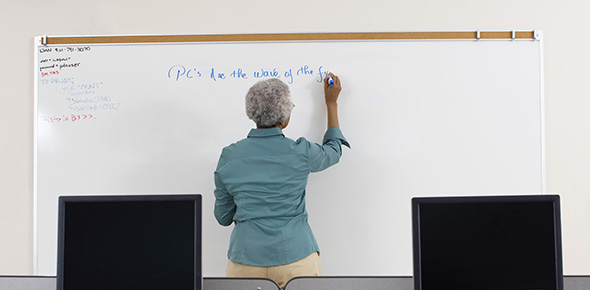Related Flashcards
Cards In This Set
| Front | Back |
|
Is depression more common in the elderly than the younger population?
|
NO
|
|
What percentage of the population do 65+ make up?Which is the fastest growing portion of the elderly population?
|
13.1%85+
|
|
How do most seniors rate their health?What is the percentage of elderly that live in the community? In a long term care/nursing home?
|
Good health93%, 7%
|
|
Which assessments should a nurse be skilled with when assessing an older client?
|
Therapeutic communication, cultural awareness, developmental changes, mental and emotional status, functional status, physical assessment
|
|
What is primary aging?What do these changes affect?
|
Primary aging is the natural process that a body goes through as it ages, internal factors independent of environmentThese changes effect how a person copes with changes and stressors
|
|
What is the single most influential lifestyle choice that has the most impact on healthy aging?
|
EXERCISE
|
|
What are the percentages for successful aging related to genes and lifestyle factors?
|
20% genes20-30% lifestyle influence on living to 100
|
|
What happens to blood pressure as we age?
|
Systolic hypertension; systolic increases 5-8mmHg/decade starting at 40W and 50MDiastolic increases at a rate of 1mmHg/decade and plateaus at 60WArteries stiffen which make BP harder to take (pseudohypertension)Pulse pressure widensAt risk for orthostatic hypotension
|
|
What happens to the heart rate and rhythm as we age?
|
Resting HR should stay the sameAthersclerotic changes result in bounding pulsePacemaker cells decline which affect the response to stress, body is slowerS3 prominent in older clients
|
|
What happens to the respiratory rate and temperature?What can the temperature changes result in?
|
Respiratory rate increases to 16-24/min, pattern should stay evenTemperature is lowered to 36C, with loss of temperature regulation because of decreased amount of sweat glands working. Leaves clients susceptible to hyperthermia and hypothermis
|
|
What happens to the skin?What are the purple lesions called?What happens to the nails and hair?
|
It becomes fragile, loose and transparentLoss of collagen fibres, subcutaneous fat redistributedPurple patches [MACULES called ACTINIC PURPURA = blood leaks]Nails go yellow and thickenHair; loss of pigment and in certain body areas (pubic, chest, axillae and limbs)
|
|
What is the term associated with age related hearing loss?What tones of the hearing does it affect?What percentage of adults over 65 does this affect?What is the pathophysiology of it?
|
PresbycuspisIt affects the upper tones (not heard as well) causing a sentence to be fragmented50%Calcified ossicles, stiffened cilia in cochlea
|
|
What happens to the sense of taste? What might be a cause for this? What about changes in the mouth?Which gustatory sense remains as the most prominent?
|
Taste decreases. Possibly because of disease or medication. The changes in the mouth include decreased salivary secretion.Sweet
|
|
What is the sunken eye appearance called?What is the fold of fat on the eyelid that can impair vision called?When does presbyopia appear? When does visual acuity rapidly decrease?Between what years is acuity fairly constant?
|
Enophthalmosblepharochalasis5th decade, 70+20-50
|
|
What is the difference between entropion and ectropion?
|
Entropion is when the lower lid inverts causing the lashes to scratch against the cornea and scleraEctropion is when the lower lid is forward and the conjunctiva is exposed
|






